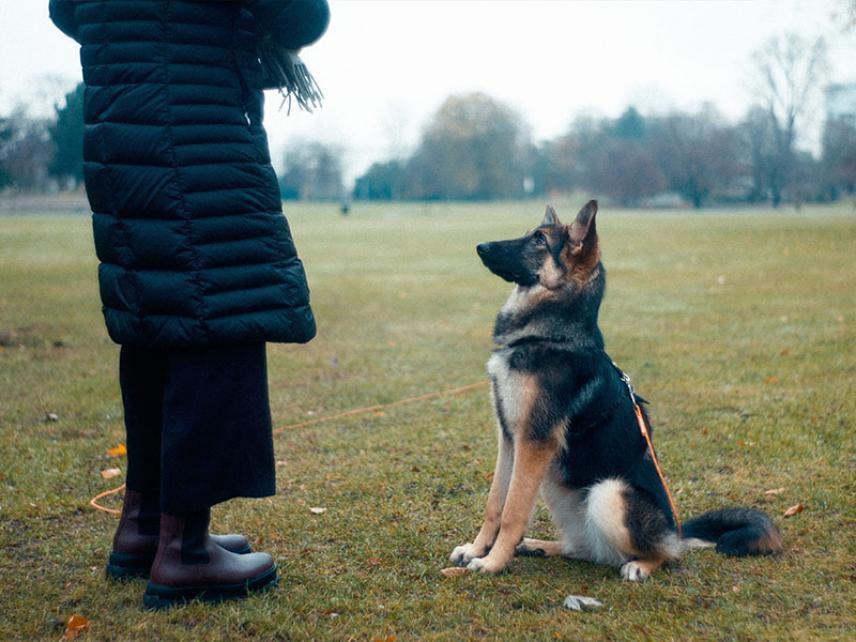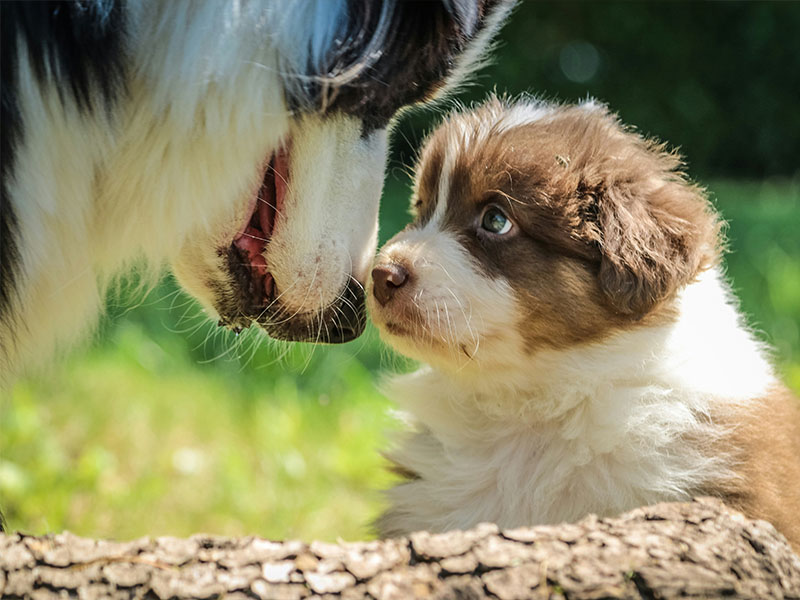The number of registered
animals is growing every day
Published: Oct 21, 2024

What is socialization in dogs? It is a process aimed at socializing the pet, teaching it proper, generally accepted behavior, which allows the dog, people, and other animals around it to coexist without harm to each other. The first stage of this process starts at the breeder's home when the puppy is born, begins to recognize its siblings, mother, and the caregiver. But what happens next, when the dog goes to a new owner? How should dog socialization proceed then?
The period of socialization for a dog is typically between the third and sixteenth week of life. It is crucial to use this short time intensively and socialize the puppy by getting it used to people, other animals, as well as sounds and everyday objects in your home. But what do the stages of socialization look like?

When to start socializing a dog? As early as possible! This is the time when the puppy absorbs everything around it, forming opinions based on associations and positive stimuli from its surroundings. These opinions can be positive or negative. At this stage, the puppy should spend time with other dogs, meet people, and be present in the house during activities like vacuuming or cleaning, to prevent situations such as chasing a broom, attacking the vacuum cleaner, or barking at the printer. The more experiences, the better for you as the dog's caretaker, as it will make it easier to raise the dog in later stages.
At this stage, puppy socialization with other dogs begins through play. The puppy, while playing with siblings, learns to understand how much pressure causes pain by biting, and it learns from similar actions by its siblings. Dog socialization with other dogs is a stage where the dog learns to coexist with others of its kind and other animals. A puppy that bothers its mother learns when she sets boundaries and curbs bad behavior. This is also the time when the puppy gets used to humans, cuddling, petting, and general contact with the breeder.
How to socialize a dog and get it used to proper behaviors and reactions towards its new owner? As a new puppy owner, you should provide as many positive stimuli as possible, approaching the puppy and its behaviors with kindness, rather than scaring the young dog with shouting or punishment. A dog that experiences negative emotions such as fear and pain during this time may become anxious, posing a significant barrier to further proper socialization, leading to mistrust towards humans. Remember to let the puppy continue interacting with other dogs and people to reinforce proper behaviors.
At this stage, your little four-legged puppy becomes a young dog. This is the best time to start teaching commands, setting behavior boundaries, disciplining, and clearly showing what is acceptable and what must be avoided. The more the dog is allowed to do, the more confident it will feel in its surroundings, potentially attempting to take the top position in the "pack" it forms with the household members.
An adolescent dog begins to experience sexual urges, while females may experience their first heat. This is a time when the dog feels confident enough to wander away from its "pack," exploring other dogs as potential mates or getting curious about unknown surroundings.
IMPORTANT! Remember to microchip the dog while it's still a puppy! The procedure is completely safe and takes only a moment. Then, register your dog in the International Animal Database to make finding the animal easier if it runs away. The finder, using the online Registered Dog Database and entering the dog's chip number, can get information on how to contact the owner.
At this time, hormones are raging in young dogs. Be aware that objects and behaviors the dog previously ignored may now trigger aggression. Appropriate approaches during ongoing socialization will help the dog stay calm.
At this stage, it's crucial to continue correcting negative behaviors and consistently show the dog its place in the group. The dog may try to maintain the role of alpha, so teaching it to respect human commands, rewarding it only for clearly defined proper behaviors, is essential.

Can an adult dog be socialized? Of course! However, be aware that the process will be slower and longer. The dog must feel comfortable, have clear boundaries in its behavior, and you must have extra patience.
With fearful dogs, calmness and composure are key! Don't stress the dog or put pressure on it. Focus on building its confidence first, making it feel happy and not scared in your presence.
What are the consequences of lack of socialization in dogs? If a dog isn't properly raised in the company of animals and people, unwanted behaviors may develop, such as:
- Lack of control over bite strength
- Fear
- Aggression
- Misreading other dogs' behaviors
- Attacking people
- Social phobias towards people, animals, objects, and sounds
Socialization helps a dog learn proper behaviors and allows it to function among people and other animals without causing harm to its surroundings.
A lack of socialization can lead to fear, aggression, social phobias, a lack of bite control, and misinterpretation of signals from other dogs.



Marking animals with a microchip is the most durable, effective and completely safe method of quick and reliable identification. Every transponder (chip) has a unique number which enables instant identification of the animal and its owner, helping them reunite faster. However, it is important to remember that a chip is just a transponder with an encoded number. It is not a tracking device and contains no data about the animal or the owner! Therefore, in order to identify a chipped dog or cat, it is necessary that a microchip be registered in a national marked animal database...
Read moreIn today's world, responsibility for animal care has become not only a priority for their owners but also a societal issue. One of the most important tools in ensuring animal safety is the chip database. It allows for the quick and efficient recovery of lost pets, which is crucial for protecting their health and well-being.
The introduction of microchipping has significantly improved the effectiveness of efforts to locate lost animals, reducing stress for both owners and their four-legged friends. Registration in the chip database is increasingly required by local regulations, further highlighting the importance of this technology in ensuring comprehensive care for animals.